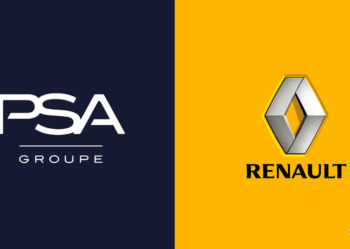How to implement the Hoshin Kanri method; strategic planning tool; in 7 key steps

We regularly talk to you about Lean Management through Jidoka, the 5S worksite…, and more globally about the different tools that allow to improve and optimize the performance of companies, both on the industrial and supplier side.
Today, we are going to look at how Hoshin Kanri is a real strategic planning tool allowing companies to define a strategic vision and to pilot change projects in order to transform the company and prepare the future in order to reach their objectives.
Hoshin Kanri was born in the aftermath of World War II, when Japan was faced with enormous infrastructural damage and had to begin a long and difficult process of large-scale reconstruction.
The Hoshin Kanri method allows to change the strategy of a company by setting new goals and objectives at every level of the organization.
The beauty of this approach is that it was developed to improve communication throughout the company and to help it consolidate its goals and objectives.
Let’s take a closer look at what Hoshin Kanri is and how it provides a real competitive advantage.
Definition
Hoshin Kanri is a Japanese term that generally translates to Compass. The Hoshin method is a strategic planning tool useful for companies to link their goals to the work produced daily by their employees. In Japanese, the word “kanri” represents management or administration so Hoshin Kanri could be translated as “Management/Compass”.
It is an approach in Lean Management integrating the principles of continuous improvement through a methodology to improve efficiency and quality through small incremental changes in processes and procedures.
When we talk about Hoshin Kanri, we often talk about defining breakthrough objectives. But what do breakthrough goals actually mean? Well, they are objectives that can only be achieved by significantly changing the way a company operates.
Often, this means changing the trajectory, the policy … and this at all levels, since the whole point of the Hoshin Kanri approach is to include each hierarchical level to advance the new policy in order to support the mission, vision and values of the company.
In this way, each operational level works towards a goal that is both relevant and common.
In this way, as project team members complete their tasks, projects are completed, allowing for project after project to be finalized and objectives to be achieved.
Through the achievement of objectives through a collective effort, a new organizational policy/direction is realized.
The Hoshin Kanri methodology is defined by 7 steps
All members of the company must act together at the same time to achieve a common goal, including through a feedback flow, called the “Hoshin Kanri catchball” based on the following operation:
- The strategy team communicates the strategy in a top-down fashion, so that each employee has the information and context to understand how his or her daily work contributes to the strategy.
- Employees implement the strategy.
- Finally, the progress of individual employees is communicated to the strategy team, who can then analyze the data and revise the strategy accordingly.
The Hoshin Method is not an ad hoc way of thinking, but a continuous cycle of planning and improvement through 7 steps:
- Step 1: Identification of the company’s vision, mission and values.
- Step 2: Definition of breakthrough objectives.
- Step 3: Breakdown of the breakthrough objectives according to the company structure and development of annual improvement plans.
- Step 4: Roll out the annual objectives from top to bottom.
- Step 5: Review results.
- Step 6: Problem solve for missed objectives.
- Step 7: Reflection and learning.
How to implement the Hoshin Kanri method in 7 key steps
Step 1: Identification of the company’s vision, mission and values
This first step consists of taking stock of the company’s vision, mission and values.
Identify your company’s key mission, vision and values, for example by writing a vision statement. This should guide your team in their long-term goals and link them to your company’s mission statement.
The Hoshin Method thus helps you understand the impact of individual work on long-term corporate goals, and by extension, on that same corporate vision.
Note that the corporate vision is part of a global reflection, the values are also important since a company with values will make its other decisions according to these principles and finally the mission in general is understood through a strategic plan over a period of 3 to 5 years.
Step 2: Definition of breakthrough objectives
Once you have identified your vision, it is time to translate it into concrete short and medium term objectives. Often led by senior management, this step consists of setting concrete objectives and goals through well-defined plans.
It is important that the objectives set are SMART, i.e.: specific, measurable, achievable, realistic, and timely. This will increase the likelihood of achieving the objectives and will make it easier to analyze them. Depending on your company’s activity and situation, these objectives may correspond to: market diversification, market specialization, a profound change in the internal organization…
Step 3: Breakdown of the breakthrough objectives according to the company’s structure and development of annual improvement plans
In order to increase the chances of achieving the breakthrough objectives set previously, management will have to “transform” them into annual objectives. It is obvious that these must be in line with the company’s global vision. However, it is important to keep in mind that not only the management will be involved at this stage. Managers and employees in general will have a close relationship with each other. This requires good internal communication and especially transparency of information.
Thus, this step is not as simple as it seems because it requires the consent of employees from different hierarchical levels. But don’t panic, there is a methodology that allows you to facilitate the establishment of a consensus within your organization. It is called “Catchball”.
Simply put, Catchball is a phase of consultation and consensus building. It establishes, in the form of objectives, the way to lead the change. Indeed, the Hoshin Kanri method implies a “break” with the company’s current operating mode. It is therefore necessary to take the time to consult with the employees before implementing the changes.
The Catchball is therefore a way to make the change more easily accepted, especially because it is based on a relationship of transparency and trust between the different hierarchical levels in the company. This sub-step allows the employees and the managers to agree on the way to implement the change(s).
The collaborative approach of Catchball therefore implies successive exchanges of ideas between participants, which improves its effectiveness by facilitating consensus between collaborators.
Step 4: Roll out the annual goals from top to bottom
It is now time to roll out the annual objectives that were set earlier in the process.
These should be rolled out to all levels of the organization, starting at the top and working down. In other words, the management will have to distribute these new objectives to all its employees, whatever their position / hierarchical level.
One way to do this is to translate the objectives into projects and then divide them into activities so that they can be assigned to the people concerned within the company’s teams.
This step is also the right time to make sure that each project and objective is aligned towards a single common (global) goal. Once these goals are achieved, the company should have a competitive advantage.
Step 5: Review Results
This step corresponds to the analysis of the results obtained following the deployment of the various objectives.
This is the opportunity to understand whether or not the company’s new strategy has been effective. In order to have a more precise idea of the performance of the strategy, it is relevant to constantly monitor and measure the progress and results of our projects.
This can be done through monthly reviews, weekly reports…
There are also tools that make it easier to visualize the status of your various projects. For example, there is the “Portfolio Kanban”. This is a method for visualizing and managing the flows related to your portfolio.
Its objective is to improve your flows thanks to a system that allows you to :
- match demand to company capacity
- identify opportunities for continuous improvement
The Kanban portfolio system also allows you to detect anomalies in your company’s workflows. This allows you to better analyze your results.
Once the results are all examined in detail, it is easier to distinguish the projects that worked best from those that did not. This also makes it easier to readjust current goals and set goals in the future.
Step 6: Problem Solving for Missed Goals
After analyzing the results, you may find that some goals could not be met. It is important to understand the reasons for this and then try to solve the problem areas.
Indeed, a missed objective can be achieved later, if we learn from our previous mistakes and if we readjust our objectives, plans and measures according to our shortcomings. We must therefore be in a continuous improvement process in order to constantly solve the problems that prevented us from achieving (part of) our objectives.
Step 7: Reflection and learning
This is the last step of the Hoshin Kanri method. It is very important because it allows us to look back on all the actions we have taken in the context of our new strategy.
It is a time to see if the choices, objectives and plans have been effective and relevant.
It is also the ideal moment to make a global and complete evaluation of the progress that has been made (or not) within the company and therefore to take a step back and have a critical mind on the performance in order to learn from it.
Two cases exist:
- Progress towards the breakthrough objectives is satisfactory: in this case, the company decides to continue in this direction for future changes and to continue to closely monitor the projects in progress.
- Progress towards the breakthrough objectives is insufficient: in this case the objectives will have to be questioned, re-evaluated and corrective measures will have to be adopted.
Benefits of the Hoshin Kanri method
If applied correctly, the Hoshin Kanri Method has many benefits for your organization:
- Incentives for a culture of change
- Focus on important changes
- Better cohesion between employees through consensus building
- Better communication between all levels of the company
- Leading profound transformations with agility
SNECI supports you in Lean Management
The Hoshin Kanri method, based on Lean Management, will allow you to implement significant changes within your organization while maintaining a good cohesion between your employees. This process will also give you a competitive advantage if it is well applied. There are also other tools and methods such as PDCA that allow for continuous improvement of your business. SNECI supports you every step of the way.
With 70 years of experience in improving industrial performance with strong roots in the automotive industry – a complex industry of excellence – defense, health, rail, luxury, energy, … and with more than 450 experts worldwide in more than 50 countries, SNECI supports manufacturers and suppliers in implementing a Lean Management approach to increase their productivity and profitability.
If you would like one of our industrial project managers to accompany you in improving your processes for greater profitability (saving time, money and efficiency), send an email to Laura who will reply within 24hrs to arrange a meeting at laura@sneci.com or directly via the contact tab on our website.





